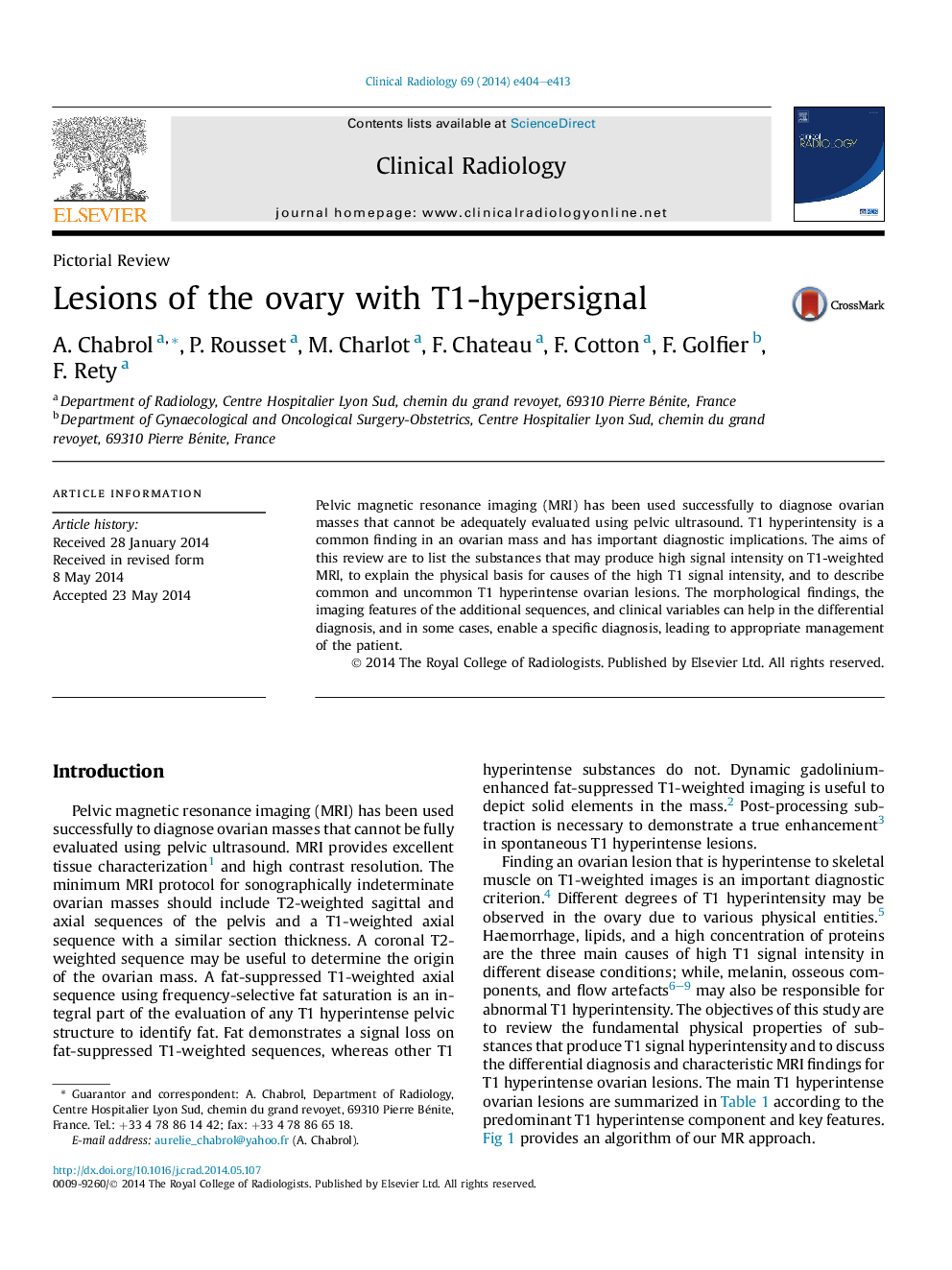| Article ID | Journal | Published Year | Pages | File Type |
|---|---|---|---|---|
| 3981783 | Clinical Radiology | 2014 | 10 Pages |
Abstract
Pelvic magnetic resonance imaging (MRI) has been used successfully to diagnose ovarian masses that cannot be adequately evaluated using pelvic ultrasound. T1 hyperintensity is a common finding in an ovarian mass and has important diagnostic implications. The aims of this review are to list the substances that may produce high signal intensity on T1-weighted MRI, to explain the physical basis for causes of the high T1 signal intensity, and to describe common and uncommon T1 hyperintense ovarian lesions. The morphological findings, the imaging features of the additional sequences, and clinical variables can help in the differential diagnosis, and in some cases, enable a specific diagnosis, leading to appropriate management of the patient.
Related Topics
Health Sciences
Medicine and Dentistry
Oncology
Authors
A. Chabrol, P. Rousset, M. Charlot, F. Chateau, F. Cotton, F. Golfier, F. Rety,
